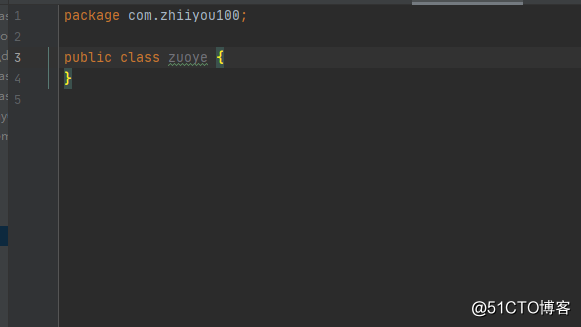Django学习笔记之View操作指南
一个视图函数(类),简称视图,是一个简单的Python 函数(类),它接受Web请求并且返回Web响应。响应可以是一张网页的HTML内容,一个重定向,一个404错误,一个XML文档,或者一张图片。
无论视图本身包含什么逻辑,都要返回响应。代码写在哪里也无所谓,只要它在你当前项目目录下面。除此之外没有更多的要求了——可以说“没有什么神奇的地方”。为了将代码放在某处,大家约定成俗将视图放置在项目(project)或应用程序(app)目录中的名为views.py的文件中。
导入:from django.views import View
一、查询所有数据查询数据在自定义的视图类中定义get方法
使用django.http模块中的JsonResponse对非json格式的数据做返回处理
在JsonResponse必须添加safe=False参数,否则会报错:In order to allow non-dict objects to be serialized set the safe
from django.http import HttpResponse from django import http # Create your views here. class UserView(View): ’’’ 用户视图 ’’’ def get(self, request): # 模型类实例化对象 users = UserProfile.objects.all() user_list = [] for user in users: user_dict = { ’id’: user.id, ’username’: user.username, ’password’: user.password, ’open_id’: user.open_id, ’code’: user.code } user_list.append(user_dict) return http.JsonResponse(user_list) 二、创建数据
使用django中的json,把前端传递过来的json数据转成字典
使用django.db.models模块中的Q来查询多个字段在数据库中是否存在
from django.views import View from django.http import HttpResponse from django import http from django.db.models import Q import json class UserView(View): ’’’ 用户视图 ’’’ def post(self, request): # 获取数据, json转字典 dict_data = json.loads(request.body.decode()) print(dict_data) nick_name = dict_data.get(’nickName’) code = dict_data.get(’code’) open_id = 'xljsafwjeilnvaiwogjirgnlg' # 校验数据 result = UserProfile.objects.filter(Q(code=code) | Q(open_id=open_id)) if not result.exists(): # 数据入库 user = UserProfile.objects.create( username=nick_name, open_id=open_id, code=code ) # 返回响应 user_dict = { ’id’: user.id, ’username’: user.username, ’password’: user.password, ’open_id’: user.open_id, ’code’: user.code } return http.JsonResponse(user_dict) return http.JsonResponse('用户已存在', safe=False, status=202)三、查询某一条数据(单个)
前端需要传递pk/id值,通过pk/id查询数据,查询一条数据必须用get,不能用filter,否则会报错:AttributeError: ’QuerySet’ object has no attribute ’id’
数据转换
返回响应
class UserProfileDetail(View): ’’’ 详情视图 ’’’ def get(self, request): userInfo = UserProfile.objects.get(id=id) if not userInfo: return HttpResponse('查询的用Info户不存在', status=404) user_dict = { ’id’: userInfo.id, ’username’: userInfo.username, ’password’: userInfo.password, ’open_id’: userInfo.open_id, ’code’: userInfo.code } return http.JsonResponse(user_dict, status=200) 四、更新一条数据
前端需要传递pk/id值,通过pk/id查询数据,查询一条数据必须用get,不能用filter,否则会报错:AttributeError: ’QuerySet’ object has no attribute ’id’
更新一条数据时必须使用filter来查询数据集,再使用update(**data)来更新数据,不能使用get,否则会报错:AttributeError: ’模型类’ object has no attribute ’update’
get查询获取到的是数据对象,而filter查询获取到的是数据集
class UserProfileDetail(View): ’’’ 详情视图 ’’’ def put(self, request, id): data_dict = json.loads(request.body.decode()) userInfo = UserProfile.objects.get(id=id) if not userInfo: return HttpResponse('查询的用Info户不存在', status=404) UserProfile.objects.filter(id=id).update(**data_dict) userInfo = UserProfile.objects.get(id=id) user_dict = { ’id’: userInfo.id, ’username’: userInfo.username, ’password’: userInfo.password, ’open_id’: userInfo.open_id, ’code’: userInfo.code } return http.JsonResponse(user_dict, status=200)五、删除某一条数据
class UserProfileDetail(View): ’’’ 详情视图 ’’’ def delete(self, request, id): userInfo = UserProfile.objects.filter(id=id) if not userInfo: return HttpResponse('删除的数据不存在', status=404)UserProfile.objects.filter(id=id).delete() return HttpResponse('数据删除成功', status=204)
上述的操作只能适用于数据表中字段很少的情况,如果字段较多,写起来会很麻烦,不利于开发
总结到此这篇关于Django学习笔记之View操作指南的文章就介绍到这了,更多相关Django View操作内容请搜索好吧啦网以前的文章或继续浏览下面的相关文章希望大家以后多多支持好吧啦网!
相关文章:

 网公网安备
网公网安备